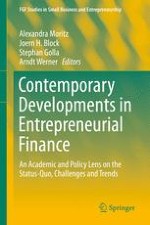2020 | OriginalPaper | Chapter
Measuring Venture Capital Sentiment in Europe
Authors : Walter Diegel, Alexandra Moritz, Joern H. Block, Antonia Botsari, Frank Lang, Helmut Krämer-Eis
Published in: Contemporary Developments in Entrepreneurial Finance
Publisher: Springer International Publishing
Activate our intelligent search to find suitable subject content or patents.
Select sections of text to find matching patents with Artificial Intelligence. powered by
Select sections of text to find additional relevant content using AI-assisted search. powered by
